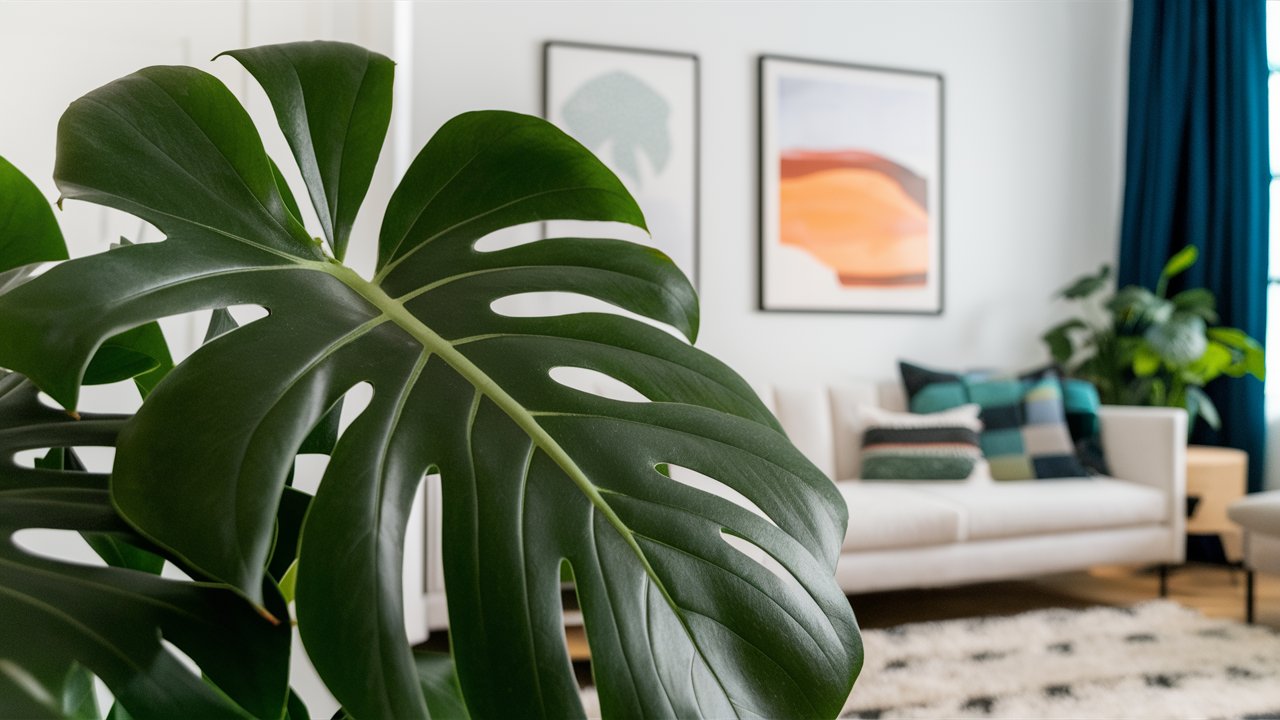Disclosure: Some links on this site are affiliate links. As Amazon Associates, we earn from qualifying purchases (at no cost to you).
Have you ever been captivated by the striking appearance of Monstera plants? Known for their unique leaves, these plants are a favorite among houseplant enthusiasts. In this article, I’ll share 10 interesting facts about Monstera flowers that will deepen your appreciation for these incredible plants.
Whether you’re a seasoned plant parent or just starting your journey, these facts will provide you with insights into the intriguing world of Monstera flowers.
1. Monstera Flowers Look Like Peace Lilies
One of the first things you’ll notice about Monstera flowers is how they look a lot like peace lilies. Monstera flowers have a spadix and a spathe, similar to peace lilies. The spadix is a cylinder-shaped part that has many tiny flowers, and the spathe is a large, leafy part that surrounds the spadix. It’s like finding out your favorite superhero has a twin!

2. Rarely Seen Indoors
If you’re an indoor plant lover, you might be sad to hear that Monstera flowers hardly ever bloom indoors. These plants need specific conditions to flower, like the right temperature, humidity, and light. In the wild, Monsteras grow in tropical rainforests where it’s humid and they get lots of indirect sunlight. Recreating these conditions at home can be tough, which is why many people never see their Monstera bloom.
3. They Need to Grow Up
Monstera plants usually need to be several years old before they start flowering. They often need to be around 3-5 years old before producing their first flowers. Think of it like waiting for a kid to grow up before they can graduate – patience is key!

4. Pollinated by Beetles
In the wild, Monstera flowers are mainly pollinated by beetles. These beetles are attracted to the spadix, where they eat the nectar and help transfer pollen from one flower to another. It’s like the beetles are having a party, and they’re the VIPs of Monstera pollination.
5. Edible Fruit
Did you know that the fruit of Monstera plants is edible? The fruit, often called “Mexican breadfruit” or “ceriman,” tastes like a mix of pineapple and banana. But be patient – you need to wait until the fruit is fully ripe before eating it. Eating unripe Monstera fruit is like eating green bananas – not a good idea!

6. Toxic Parts
While the ripe fruit is edible, other parts of the Monstera plant are toxic if eaten. The leaves and stems have calcium oxalate crystals, which can cause irritation if ingested. So, if you have pets or small kids, keep them away from chewing on the plant. It’s not the kind of snack you want them to have!
7. They Can Grow Huge
Monstera plants can grow pretty big, and so can their flowers. A mature Monstera plant can produce flowers that are quite large. Imagine having a flower that’s nearly the size of your head – now that’s a statement piece!
8. Flower Color
Monstera flowers are usually a creamy white color, which makes them stand out against the dark green leaves. Their color adds a touch of elegance to the plant. It’s like the Monstera is dressing up for a fancy event.

9. They Smell Good
Another cool fact is that Monstera flowers have a pleasant fragrance. Their smell can be quite nice, making your space feel like a tropical paradise. It’s like having a natural air freshener right in your living room!
10. Not Just for Looks
While Monstera flowers are pretty, they also serve an important purpose. These flowers eventually turn into fruit, which helps the plant reproduce. So, the flowers are not just there to look good – they’re part of the plant’s life cycle.

How to Care for Monstera Plants
Caring for Monstera plants is relatively easy if you follow these simple guidelines:
- Light: Monsteras thrive in bright, indirect light but can tolerate low light. Avoid direct sunlight as it can burn the leaves.
- Water: Water your Monstera when the top inch of soil feels dry. Be careful not to overwater; Monsteras don’t like to sit in soggy soil.
- Humidity: These tropical plants love humidity. If your home is dry, consider misting your Monstera or using a humidifier.
- Soil: Use a well-draining potting mix. A mix designed for houseplants or one with peat, perlite, and pine bark works well.
- Fertilizer: Feed your Monstera with a balanced houseplant fertilizer every month during the growing season (spring and summer).

FAQs
1. How often should I water my Monstera?
- Water your Monstera when the top inch of soil is dry. This usually means watering once a week, but it can vary depending on your home’s conditions.
2. Why are the leaves of my Monstera turning yellow?
- Yellow leaves can be a sign of overwatering or poor drainage. Make sure your plant isn’t sitting in water and that the pot has good drainage.
3. Can I grow a Monstera plant outdoors?
- Yes, in tropical or subtropical climates, Monsteras can be grown outdoors in a shaded area. Just protect them from direct sunlight and extreme temperatures.
4. How can I make my Monstera plant grow faster?
- Provide it with bright, indirect light, regular watering, and monthly feedings of balanced fertilizer during the growing season.
5. Are Monstera plants safe for pets?
- No, Monstera plants are toxic to pets if ingested. Keep them out of reach of cats, dogs, and other animals.

Final Thoughts
Monstera plants are more than just their stunning leaves. Their flowers are fascinating too, offering beauty, fragrance, and even edible fruit.
Whether you’re hoping to see your Monstera flower someday or just love learning about these unique plants, knowing these facts can make you appreciate them even more. And remember, patience is key with these tropical beauties.
Happy planting!


